The modern kitchen may look like a culinary cockpit—sleek knives magnetized to the wall, gleaming appliances humming in harmony—but beneath the chrome veneer lurk hazards worthy of a safety inspector’s report. Because we cook every day, our brains slip into autopilot, and tiny shortcuts start to feel harmless: rinsing a chicken breast in the sink, leaving a saucepan to simmer while we answer a text, yanking a baking dish from the oven and landing it on a chilly granite counter. In isolation, each habit seems insignificant; together, they create the perfect recipe for cuts, burns, food-borne illness, and house-fire heartbreak.
Public-health researchers routinely trace outbreaks of salmonella, E. coli, and campylobacter back to home kitchens, not restaurants. Fire departments log thousands of residential blazes every year that begin with an unwatched frying pan. Even the emergency room tells a cautionary tale: surgeons suture far more lacerations from dull knives than from sharp ones. We tend to picture catastrophes as dramatic one-off events, yet the real villains are these mundane missteps repeated day after day. The good news? Once you know where danger hides, small tweaks—sharpening a blade, swapping a sponge, adjusting the thaw setting—deliver outsized protection.
Consider this your culinary risk audit. In the pages ahead, we’ll spotlight 12 seemingly innocent routines that quietly court disaster, from the germ party brewing in your favorite dishcloth to the electrical overload behind your coffee-maker collection. Each entry explains why the habit is hazardous, how the science backs it up, and the swift corrective step that turns peril into peace of mind.
1. Using Dull Knives
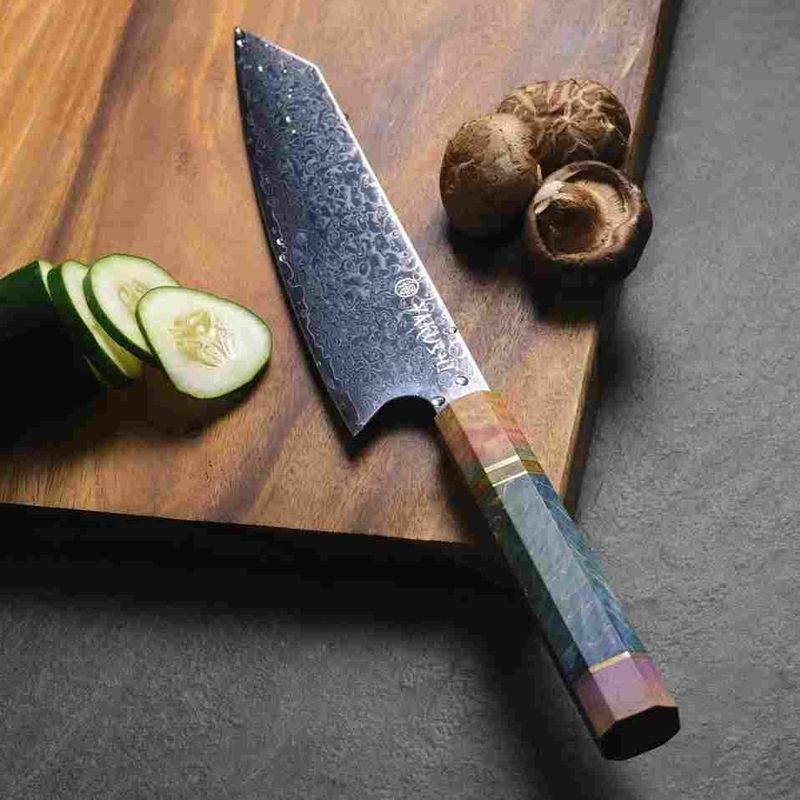
Ever noticed how you push harder when cutting with an old knife? Dull blades are actually more dangerous than sharp ones because they require extra force and can slip unexpectedly. When this happens, the knife might jump off the food and slice your finger instead.
Professional chefs sharpen their knives regularly for a reason. A sharp knife glides through food with minimal pressure, giving you better control and reducing accident risks. Many home cooks mistakenly keep using the same knives for years without proper maintenance.
Invest in a simple knife sharpener and use it monthly. Your fingers will thank you, and your food prep will become faster and safer too!
2. Ignoring Expiry Dates
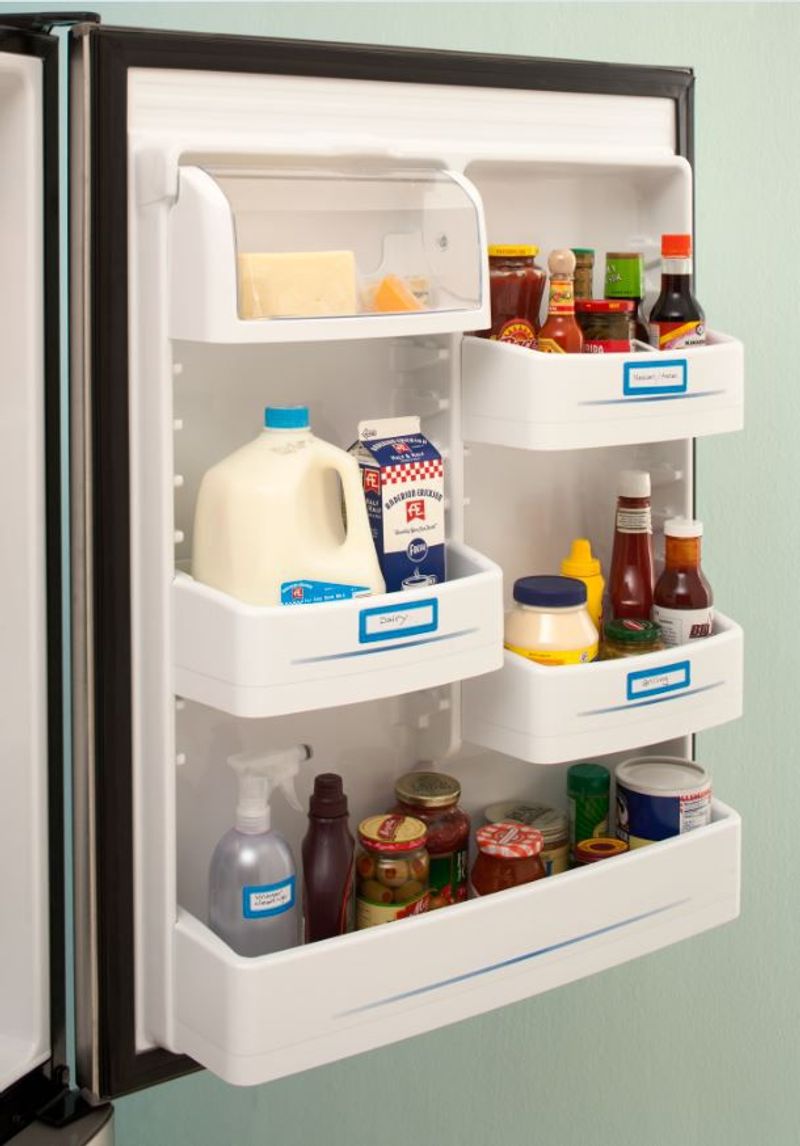
That fuzzy spot on your bread might seem small enough to cut around, but it signals a bigger problem. Mold visible to the naked eye means microscopic spores have likely spread throughout the entire food item, potentially causing serious illness.
Food manufacturers don’t just randomly assign those dates on packaging. They’re carefully calculated based on when bacteria might reach dangerous levels or when quality significantly deteriorates. Playing food safety roulette by ignoring these guidelines puts your entire household at risk.
Create a simple system: place newer items at the back of your refrigerator and older ones in front. This “first in, first out” approach restaurants use can drastically reduce your chances of foodborne illness.
3. Rinsing Raw Poultry
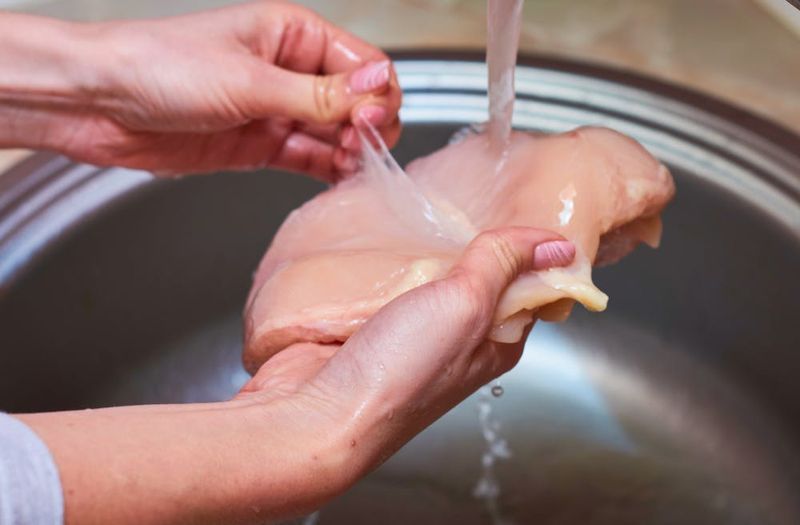
Grandma might have taught you to wash chicken before cooking, but modern food safety experts strongly disagree. When water hits raw poultry, it creates tiny droplets that can travel up to three feet from your sink, spreading harmful bacteria like Salmonella throughout your kitchen.
These invisible contaminated droplets land on countertops, dish towels, and nearby foods that won’t be cooked. Studies show that proper cooking completely kills bacteria on poultry, making washing unnecessary and actually counterproductive.
Instead, transfer meat directly from package to pan. If you want to remove excess moisture, simply pat it dry with paper towels and immediately throw them away. Then wash your hands thoroughly with soap for at least 20 seconds.
4. Skimping on Handwashing
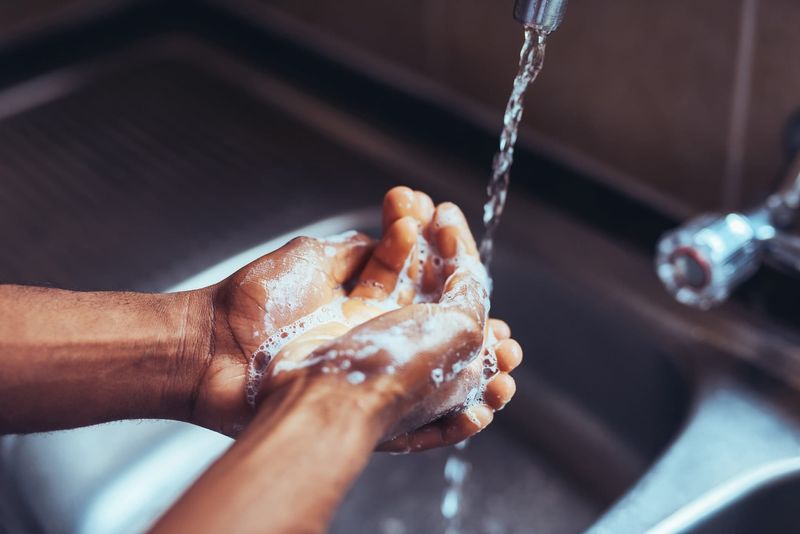
A quick rinse under the tap doesn’t cut it when it comes to kitchen safety. Your hands touch everything from raw meat to doorknobs, collecting bacteria that multiply rapidly and transfer to whatever you touch next.
Most people wash their hands for just 6 seconds on average – far short of the recommended 20 seconds needed to properly remove harmful microorganisms. Simply wetting your hands removes virtually no germs at all. The mechanical action of scrubbing with soap is what breaks down the fatty membrane of bacteria and viruses.
Make a habit of singing “Happy Birthday” twice while washing your hands with soap and warm water. Pay special attention to fingertips, between fingers, and wrists – areas commonly missed during rushed handwashing.
5. Keeping Ancient Sponges
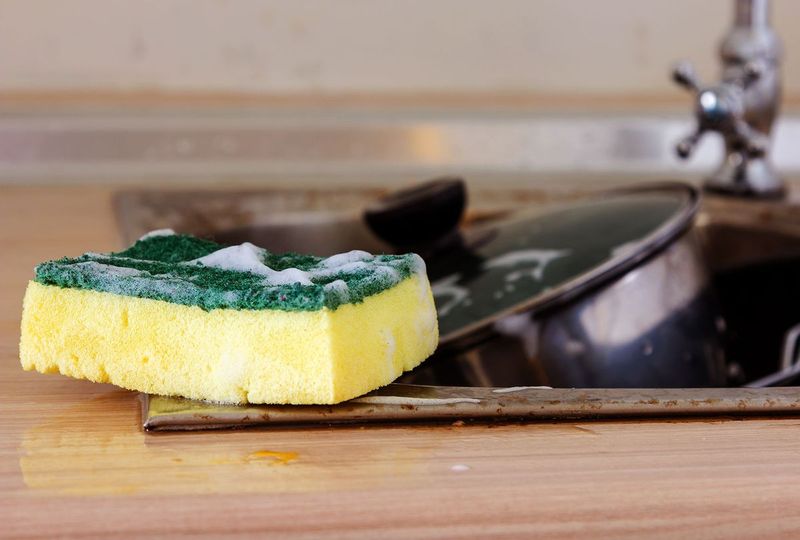
That innocent-looking sponge beside your sink might be the dirtiest item in your entire home. Studies show kitchen sponges can harbor over 362 different species of bacteria, with concentrations reaching up to 45 billion per square centimeter – more than in your toilet!
Warm, moist environments create perfect breeding grounds for harmful microbes. Each time you wipe a surface with an old sponge, you’re essentially painting it with a fresh coat of bacteria. The porous texture traps food particles that feed these microscopic invaders.
Replace sponges weekly, or disinfect them daily by soaking in a bleach solution (1 tablespoon bleach per gallon of water). Alternatively, microwave wet sponges for two minutes or run them through your dishwasher’s hottest cycle with the drying feature on.
6. Mixing Cutting Boards
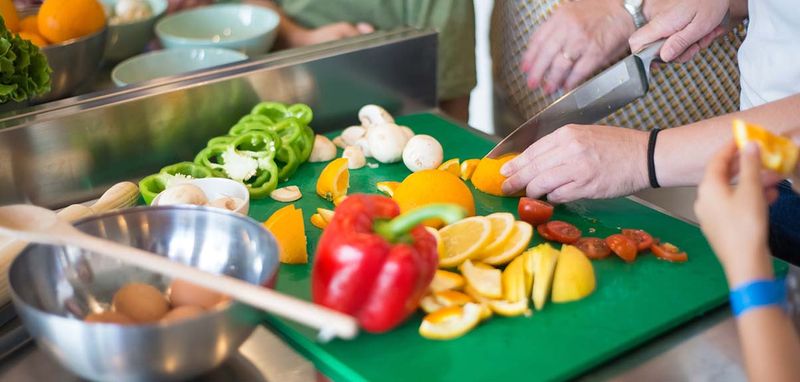
Remember that chicken you just cut up? Tiny droplets of raw meat juice have now soaked into your cutting board’s surface. Without proper cleaning, these invisible bacteria can transfer to the carrots you chop next – a dangerous mistake called cross-contamination.
Wood and plastic cutting boards develop knife grooves over time where bacteria hide from cleaning. Even worse, many home cooks use the same board for everything, creating a perfect storm for foodborne illness.
Adopt the professional kitchen approach: use separate color-coded cutting boards for different food types. Red for raw meat, green for vegetables, blue for seafood. After each use, scrub with hot soapy water and sanitize with a diluted bleach solution (1 tablespoon bleach per gallon of water).
7. Thawing Meat on the Counter
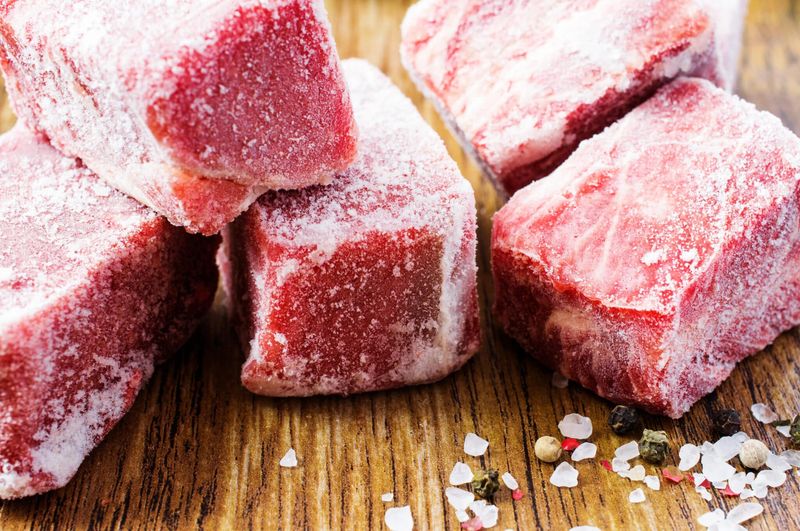
Leaving that frozen steak on your counter all day creates a bacteria playground. The outer layers reach the “danger zone” temperature (40-140°F) long before the center thaws, allowing harmful microbes to multiply rapidly while you’re away.
Bacteria can double in number every 20 minutes at room temperature. By the time your meat is fully thawed, the exterior could harbor dangerous levels of pathogens, even if it still looks and smells fine. This common shortcut puts your family at serious risk of food poisoning.
Plan ahead and thaw meat in the refrigerator, which keeps it at a safe temperature throughout the process. For faster results, use the cold water method: seal meat in a leak-proof bag and submerge in cold water, changing the water every 30 minutes.
8. Abandoning Active Cooking
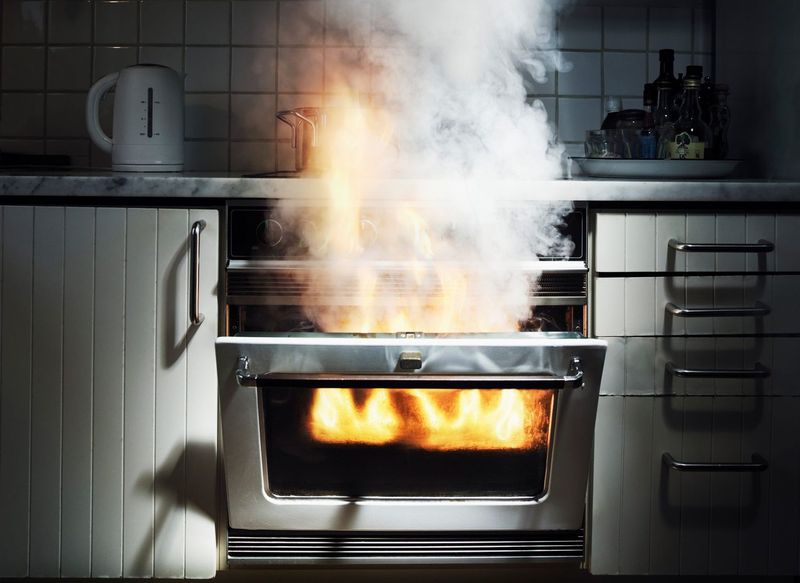
Multitasking while cooking might seem efficient, but wandering away from the stove is like playing with fire – literally. Kitchen fires typically start small and grow rapidly, with grease fires capable of doubling in size every 30 seconds.
A momentary distraction – answering the door, checking your phone, helping with homework – provides ample time for disaster. By the time you smell smoke or hear a smoke alarm, the situation may already be dangerous or uncontrollable.
Stay within arm’s reach of cooking food, especially when using high heat or oil. If you absolutely must leave the kitchen, remove the pan from heat or turn off the burner. Consider setting a phone timer as a reminder if you step away even briefly.
9. Overloading Power Outlets
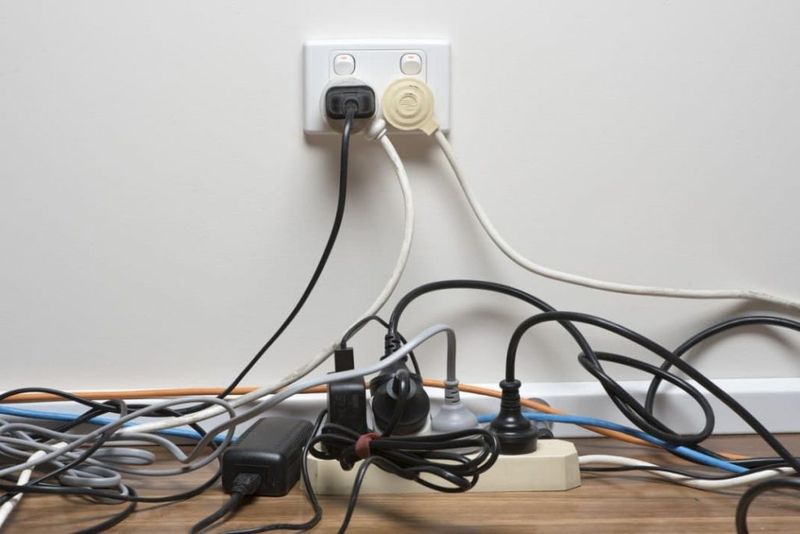
Modern kitchens buzz with appliances – coffee makers, toasters, blenders, slow cookers – all competing for limited outlet space. Daisy-chaining power strips or plugging multiple high-wattage devices into a single outlet creates a dangerous electrical overload risk.
Electrical fires often start inside walls where you can’t see them developing. The warning signs might be subtle: warm outlet plates, flickering lights, or frequently tripping circuit breakers. By the time you smell burning plastic, the fire may already be spreading within your walls.
Calculate your electrical load by adding up device wattages and ensuring you stay under 1,500 watts per outlet. Unplug appliances when not in use, and consider having an electrician install additional circuits if your kitchen consistently trips breakers.
10. Mixing Cleaning Chemicals
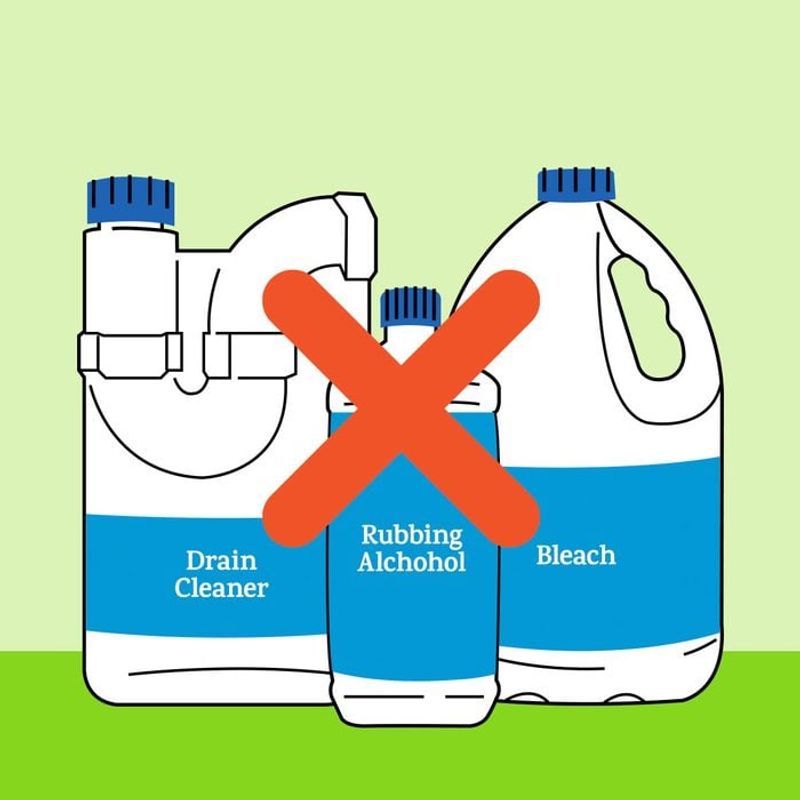
That stubborn kitchen stain might tempt you to create a “super cleaner” by combining products, but this common mistake can produce toxic gases that damage your lungs or even prove fatal. Mixing bleach with ammonia creates chloramine vapor that can cause respiratory damage within minutes.
Many people don’t realize household cleaners contain these chemicals. Vinegar (an acid) combined with bleach releases chlorine gas, while bleach and rubbing alcohol create chloroform and hydrochloric acid. These dangerous reactions can happen quickly in poorly ventilated spaces.
Stick to one cleaning product at a time and always read labels carefully. Store chemicals in their original containers to avoid confusion, and ensure proper ventilation by opening windows when using strong cleaners. When in doubt, simple soap and water effectively clean most kitchen surfaces.
11. Causing Thermal Shock to Glassware
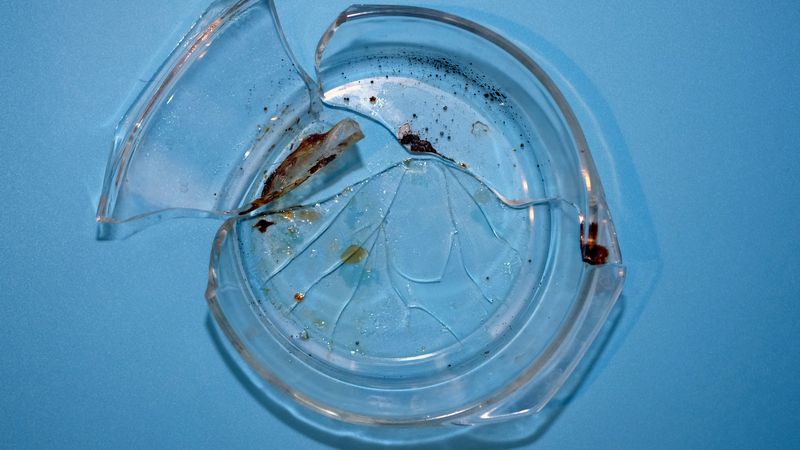
The sound of shattering glass might be your first warning that you’ve just made a dangerous thermal shock mistake. Glass and ceramic bakeware can explode when exposed to sudden temperature changes, sending razor-sharp shards flying across your kitchen at surprising speeds.
Many home cooks don’t realize that even heat-resistant glass has limits. Taking a dish from freezer to oven, placing hot glassware on a wet countertop, or adding cold ingredients to a hot dish can cause catastrophic failure. The outer surface expands or contracts faster than the inner material, creating stress that exceeds the glass’s strength.
Allow bakeware to gradually change temperature. Never place hot glass on cool surfaces – use dry potholders or cooling racks instead. Check dishes for chips or cracks, which significantly weaken structural integrity.
12. Fighting Grease Fires with Water
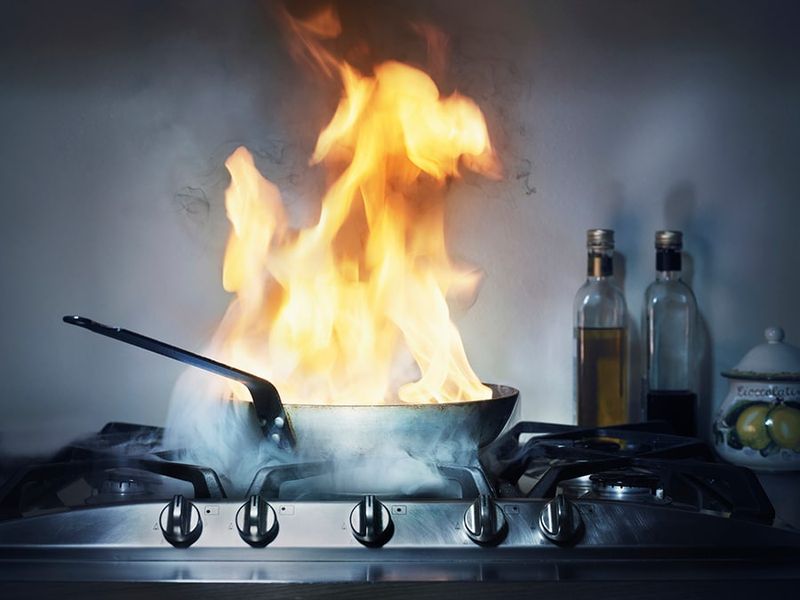
Your instinct to grab water when you see flames could turn a small grease fire into a dangerous inferno. When water hits burning oil, it instantly vaporizes, exploding outward and carrying flaming oil droplets that can cause severe burns and spread the fire.
Many home cooks panic in the moment, forgetting this crucial safety rule. Even professional chefs have made this mistake, resulting in kitchen fires that quickly spiral out of control. The science is simple: oil and water don’t mix, and burning oil floats on water.
Instead, turn off the heat source if possible. Then smother flames by sliding a metal lid over the pan or tossing baking soda for small fires. Keep a kitchen-rated fire extinguisher within easy reach, and never hesitate to evacuate and call 911 if a fire grows.
Leave a comment